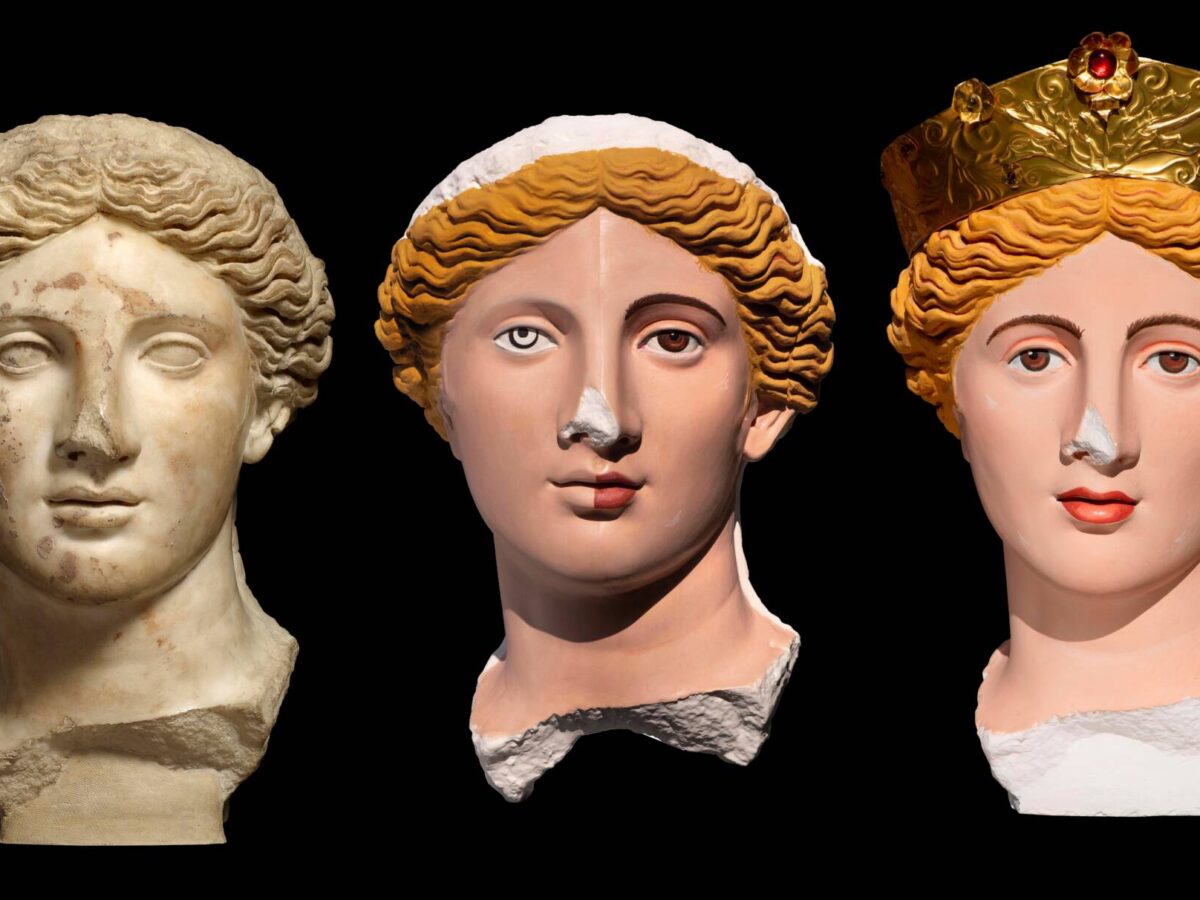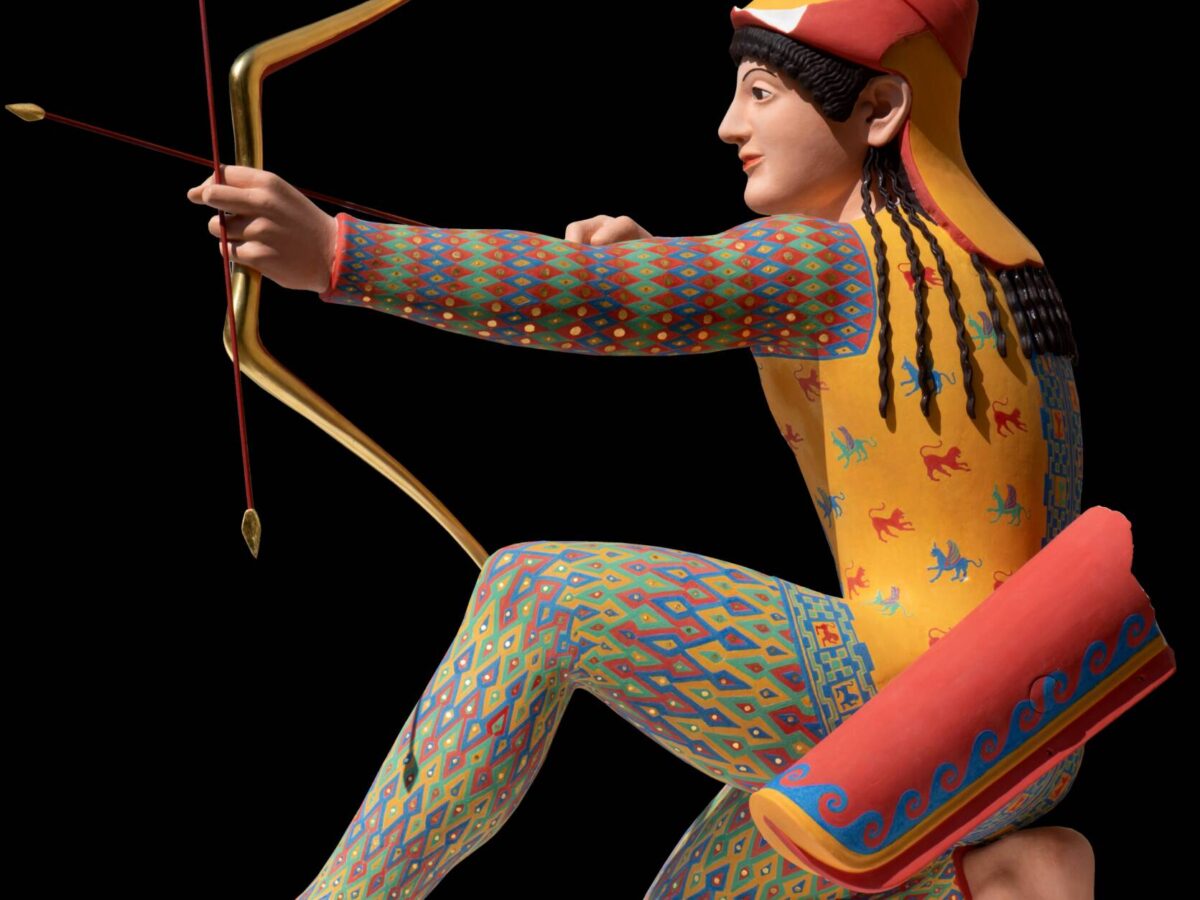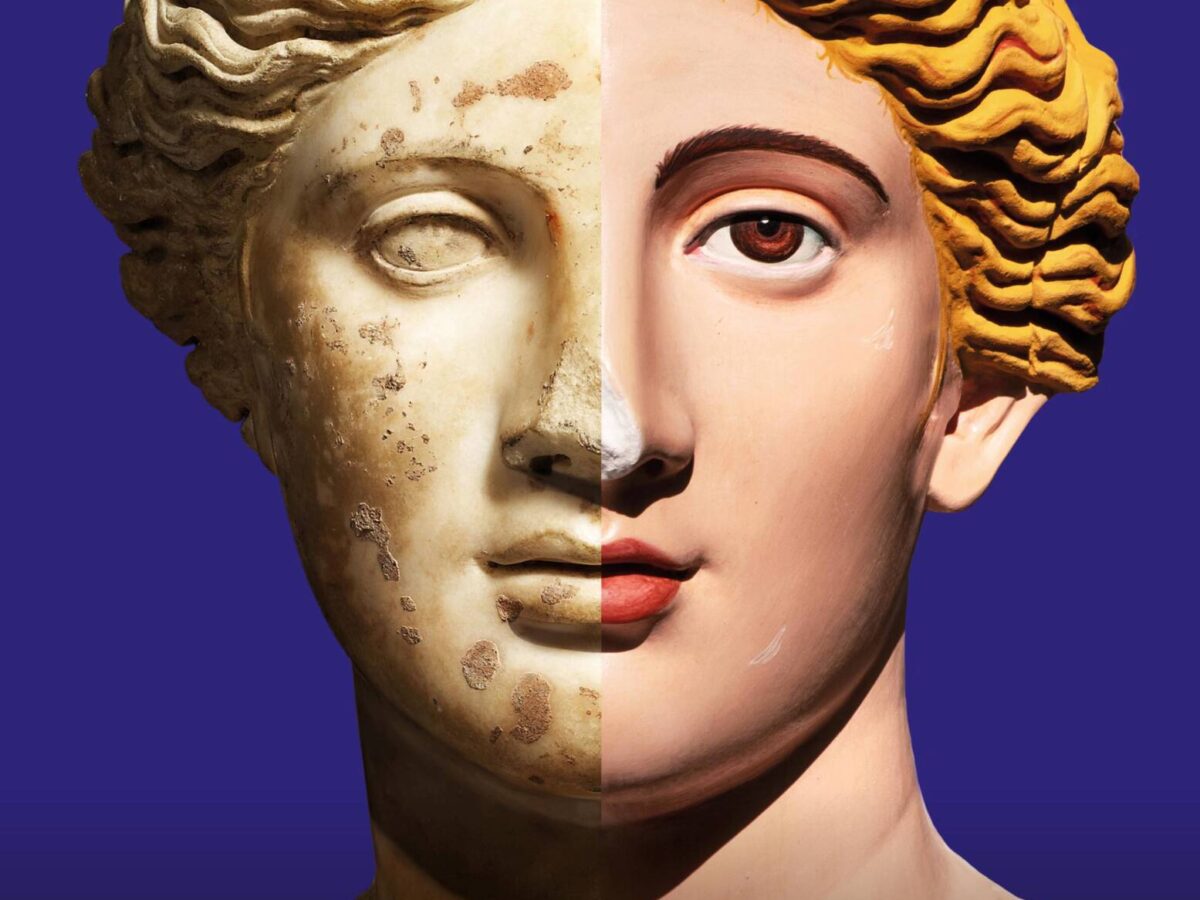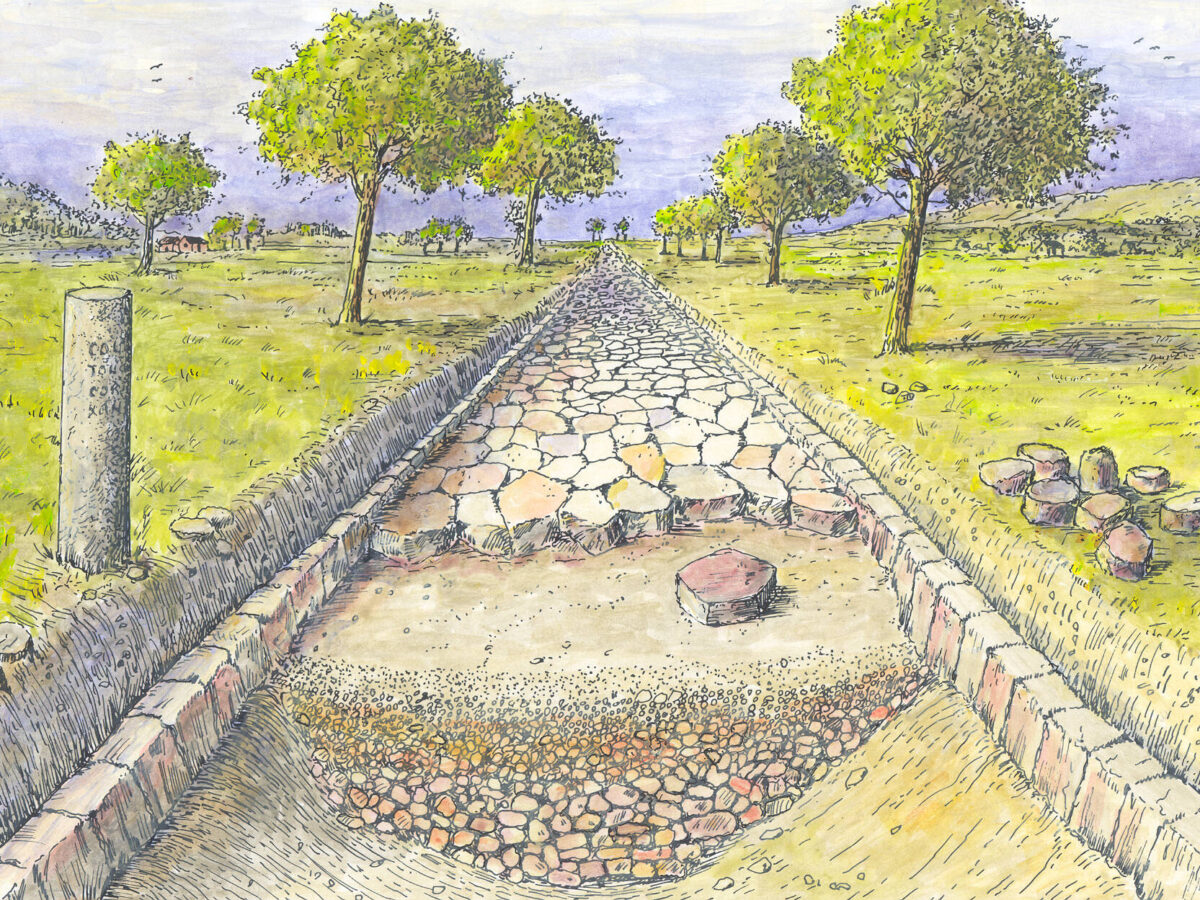Antiquity Comes to Life in Colour at the Gallo-Roman Museum
Author: Harry Lindelauf
Photography: Gallo-Romeins Museum Tongeren

We’ve always thought we knew for sure: ancient Greek and Roman sculptures have the colour of the stone or bronze from which they were made. But a new exhibition at the Gallo-Roman Museum in Tongeren overturns that certainty. The pale faces regain their colour — in fact, vividly so.
Photo: Head of a Roman statue of a goddess with colour reconstructions. On the original sculpture, many traces of paint are still visible: pink on the skin, black around the eyes, and yellow in the hair. The goddess wore a headdress made of another material, probably metal. This has not survived, but it explains why the sculptor left the crown of the head unfinished.

Tongeren offers visitors a remarkable experience: dozens of life-size, colourful reconstructions are brought together here.
You can see the sculptures as we know them today — depictions of gods, emperors, warriors, and mythological figures — and also the work of Prof. Vinzenz Brinkmann, curator of Classical Antiquities at the Liebieghaus Skulpturensammlung in Frankfurt am Main. He researches the polychromy of ancient sculpture and, together with his wife, Dr. Ulrike Koch-Brinkmann, creates scientifically accurate, life-sized reconstructions. In a film, the researchers explain the analytical techniques they use and show how the reconstructions are made. Brinkmann’s research begins with traces of paint found on authentic sculptures. Several ancient Greek and Roman statues on display in Tongeren still show original colour residues.
Photo: Reconstruction of a statue of an archer from the pediment of a temple dedicated to the goddess Aphaia (Aegina, Greece, c. 480 BC).
The House of Delos
One of the highlights of the exhibition is a video installation featuring a luxury house on the Greek island of Delos, dating from the first century BC. It includes a life-size reconstruction of a statue of a young woman, possibly the lady of the house. As in antiquity, it is painted in pastel shades — a pink dress and a translucent light-green shawl.
Educational and Fun for Young Visitors
Interactive computer games show children aged 7–12 how ancient sculptures were made. On Sundays and during school holidays, there is a creative workshop where young visitors, inspired by the colours of the reconstructions, can create and paint their own designs on a marble tablet. Their artwork can be taken home as a souvenir.

Even Bronze Statues Were Painted
In ancient Greece and Rome, many statues were not carved in marble but cast in bronze — and these too were painted. The exhibition features four reconstructions of famous bronze sculptures: two Greek warriors from around 450 BC (found in Riace, Italy), and the pair known as “The Boxer and the Prince.” These two were discovered together on the southern slope of Rome’s Quirinal Hill.
Gallo-Roman Museum Tongeren, “Antiquity in Colour” — on view until 2 June 2024.

